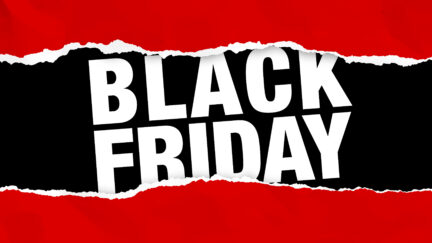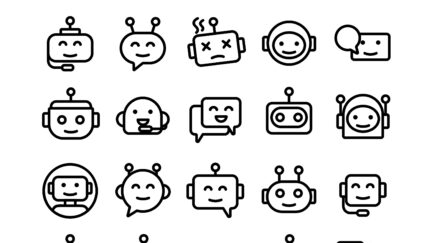How to hire the right freelance Web Designer
We all need web designers at some stage in our business lifecycle, whether it’s for a from-scratch web build or a site redesign as part of a major rebranding project. Much like graphic design and web development, web design has become a staple skill for all businesses at various stages of their growth journeys.
Not only is web design a key skill for any 21st-century business, but consider this from a consumer perspective: 75% of website credibility is said to stem from design, and everything from dwell time to impressions is impacted directly by how good web design stands in the eye of the user.

As a result of the growth in the demand for good web design over the past 20 years or so, the skill has inevitably been a victim of its own success insofar as bloat in supply and varying quality out there. Depending on what you need to have done, whether it’s a fresh build for a small local business only a few pages deep or large ecommerce site with hundreds of pages, it is easy to feel spoilt for choice and overwhelmed when enlisting web design talent.
With this guide, we’ll hopefully give you some important and useful primers for cutting through the fat and focusing in on the type of web designer you need for your project.
But first of all…
What does a Web Designer actually do?
In their key essence, web designers will by their trade interpret what you envision or have in mind into a living, breathing, real website. This will include everything from imagery to layout and images and font, in a skillset that to some extent crosses that of a typical graphic designer. You can also expect web designers to possess some degree of decent coding ability; maybe not as much as your average full stack developer though certainly enough to build a website. While you may need to bring in additional specialisms such as developers, graphic designers and SEO specialists to compliment and supercharge your website project, most web designers do have the well-rounded skills to make a decent stand-alone website on their own merit.
Now that you’re with us on what a web designer does, below are some key steps in order to help you pinpoint the web designer of your dreams.
What are the goals of the site?
Are you a newly-launched business looking to kickstart your online visibility with a standout site that leans on its blog for getting users into the top of the funnel? Or are you an existing ecommerce brand that is looking for a site re-design in order to sell more products through best-in-class design? This is of course what you as a brand, site owner or small business should and will probably know. However it’s important to lead into your web designer search with your goals solidified. Having a robust, informed brief from the offset will help you cut through your options when looking for a freelancer or web design resource. It’ll also be a huge step towards finding a good web designer if they’re able to understand your brief and connect with your goals in their early interpretations. Which leads us on to:
It’s all about mockups
This can come either after you’ve scoped out a few freelance web designers or before, depending if you have the internal brainstorming resources to develop some rough vision boards or mock-ups. Regardless, you should certainly get to a place where you have roundabout idea of what colour schemes, iconography and graphics you want on your website to best reflect your brand.
To aid with this, shop around and find some styles of existing websites, perhaps even competitors, that you’re keen on to serve as an influence. This can help inform your own brainstorming process as well as be used as part of a brief to inform your talent pool candidates to help you get a good lay of the land while you’re choosing your web designer.
Shop around for talent
Upon getting your wish list in order on top of the goals and KPIs (as well as your budget!) for your web design project, it’s time to draft up a list of web design freelance talent. Pull together your list of mood boards and mockups (if you have them) as well as your list of sites you like.
There are several ways to look for a good web designer. You can ask your network or industry business groups you’re connected to in order to see if they recommend anyone they’ve worked with previously that has worked on styles in accordance with your industry. You can also browse web design talent using a simple Google search. This will likely present with a mixture of results of comprising of web design agencies, individual web design freelancers and freelancer marketplace sites like PeoplePerHour.
Have a browse around the profiles you find. Most web design talent will showcase examples of their work on their respective sites or profiles so you’ll be able to get an idea as to their stylings and range of design ability to see if suits your brand or project vision. Before you’re ready to establish contact, shortlist perhaps 5 or 6 web designers you like the look of. This will be able to give you a good pick of the bunch while you work out individual availability, pricing and timelines along other things.
The deciding process
Once you’ve done your scoping and have an idea of availability (let’s assume 3-4 of your shortlist are available) then you can crack with the more formal pitching process by hashing out the details on pricing as well as receiving some mood board sampling from the talent in question. It’s also important at this point to be clear around the number of feedback iterations within the price bracket (2-3 is usually industry standard) as well as delivery timelines and possible windows of contingency and flexibility.
Once all the necessary, albeit boring details are consolidated with each of your contacts then you should know pretty soon who you’ll want to go with based on the mock-ups or mood boards you get back. Dialogues with the talent and that knowing that they “get” your brand and whether you “click” during the initial conversations should give you a strong indication as to who to go with.
Once you’ve got to this stage you should be in a good shape to begin your web design adventure. Good luck!














